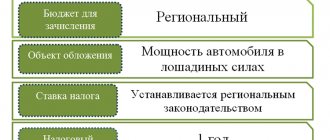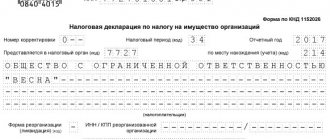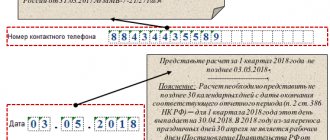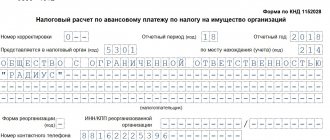The property deflator coefficient for taxation of real estate owned by individuals is applied until 2020. The value of the coefficient indicator is annually reviewed and approved at the national level by orders of the Ministry of Economic Development. These coefficients are needed to adjust the inventory value of property assets to the current inflation rate.
This method of calculating the tax base is typical only for the method of calculating tax based on inventory value. This methodology is considered irrelevant due to the bias of the resulting calculation results, but in 2021 it can still be used where calculation from the cadastral value has not yet been introduced. Due to the need to unify approaches to real estate taxation, only cadastral valuation will be used everywhere as a guideline for calculating property tax from 2021.
Deflator coefficient for UTII
For individual entrepreneurs and organizations that pay UTII, they use a coefficient, or as it is also called K1, to adjust the value of the basic income of a particular type of activity. The deflator coefficient for UTII for 2021 was 1.915. The increase compared to the 2021 value (1.868) was 2.5%. From which it follows that even if the value of the physical indicator by type of activity does not change and the local authorities leave the size of K2 at the same level, the tax payable to the budget in 2021 will increase.
Let's consider calculating the amount of tax for a UTII payer in 2021. For the calculation, let's take a store with a sales area of 15 m2, a basic profitability of 1,500 rubles. per 1 m2, K2 in the region is set at level 1, and the UTII rate is 15%.
(1500 * 15 * 1,915 * 1 *15%) * 3 months. = 19,389 rub.
This is how much the payer will have to pay to the budget.
Deflator coefficients K1 and K2 in 2021
As of January 1, 2021, the single tax on imputed income has been abolished, and the corresponding amendments to the Tax Code of the Russian Federation have entered into force. But the Ministry of Economic Development in the draft order still determined the deflator coefficient for 2021 for UTII in the amount of 2.065. This is a reference value K1, which will take on practical meaning only if the effect of the “imputation” is restored or extended for some more time.
Regional authorities independently determine the K2 deflator coefficient for 2021. But since there will be no UTII in the coming period, there are no drafts of such regional regulations yet. This indicator is no longer needed.
Deflator coefficient for PSN
For individual entrepreneurs who use PSN, the deflator coefficient is used to calculate the maximum annual income by type of business activity. According to the law, the basic value of the maximum possible annual income of an individual entrepreneur is set at 1 million rubles. (clause 7 of article 346.43 of the Tax Code of the Russian Federation). In 2021 the coefficient was 1.481, in 2021 - 1.518. It follows from this that the maximum amount of potential annual income for an individual entrepreneur on a patent will be 1.518 million rubles. (RUB 1 million × 1.518). Having calculated the maximum possible cost of a patent for one month of 2019, we receive a payment of 7,590 rubles. (RUB 1.518 million × 6%: 12 months). But we should not forget that local authorities have the right to increase the amount of potential annual income for certain types of activities several times (Clause 8 of Article 346.43 of the Tax Code of the Russian Federation) and when calculating, it is necessary to take into account regional legislation.
Increasing the simplified income limit
The simplified taxation system (STS) is the only item in the list of deflator coefficients, the increase of which has a beneficial effect on taxpayers. This is due to the fact that the deflator coefficient for the simplified tax system for 2021 does not affect the tax rate, but the annual income limit for applying the preferential tax regime.
The Tax Code of the Russian Federation establishes that the use of a simplified taxation system is permitted only for annual revenues of no more than 150 million rubles. This indicator has not been indexed since 2021. It was equal to 1,000. Now it will be indexed at 1.032. This means that the maximum amount of revenue for the purposes of applying the simplified tax regime will increase by 3.2% and amount to 154.8 million rubles.
Simultaneously with 01/01/2021, the norms of the Tax Code of the Russian Federation provide for a transition period for payers of the simplified tax system, which will slightly exceed the limits. In particular, with a maximum annual revenue of 200 million rubles and an average number of employees of up to 130 people, they will retain the right to use the simplified system. But they will be subject to higher tax rates.
Follow changes in deflator coefficients and learn how to use them correctly from the ConsultantPlus instructions. Free access for 2 days.
to read.
Deflator coefficient for personal property tax
If the calculation of an individual’s property tax is based on the inventory value of the property, the value is adjusted by multiplying by a deflator coefficient. Its value this year was 1.481, in 2021 – 1.518.
For example, if the cost of an apartment is 2.5 million rubles. then, taking into account the coefficient, the calculation will take place from 3.795 million rubles. (1 million * 1.518). The calculation of tax amounts from the inventory value remains only in some regions of the country, but from 2021 the tax will be calculated based on the cadastral value.
How do general rules and local specifics relate?
The rules for calculating and paying property tax for individuals are enshrined in Chapter 32 of the Tax Code. The provisions of this chapter are the same for all municipalities of the Russian Federation, but local authorities have the right to establish some features within the framework of general rules.
Thus, the municipality can approve its tax rates. The main thing is that the “local” value fits within the framework established by Chapter 32 of the Tax Code of the Russian Federation. In addition, “local” rates may not be uniform, but differentiated, that is, depending on the type of object, its location, cadastral or total inventory value, or on the type of territorial zone.
In addition, municipalities are allowed to increase the amounts of tax deductions established in the Tax Code of the Russian Federation and introduce additional benefits. But local authorities do not have the right to reduce deductions and reduce the list of benefits.
Tax rates and deductions can be found at your tax office.
Deflator coefficient for trade tax
Trade fee payers use a deflator coefficient to adjust the fee rate determined for activities related to the organization of retail markets (clause 4 of Article 415 of the Tax Code of the Russian Federation). The fee rate is set at 550 rubles. per 1 m2 of retail market area. The coefficient for 2021 was set at 1.285; for 2021 the coefficient will increase to 1.317. The fee rate will be 724.35 rubles. (550 rubles * 1,317). The trade tax is valid in Moscow and its tariffs are established and fixed by the law of Moscow.
What are deflator coefficients and how are they used?
Deflator coefficients show the impact of changes in consumer prices for goods (works, services) in the previous period.
They are approved annually by the Ministry of Economic Development, taking into account the level of inflation and price growth index determined by Rosstat and the Ministry of Economic Development. Deflator coefficients are used to annually adjust rates for certain taxes and fees. There is a separate deflator coefficient for 2021 for construction, but it is not called a deflator coefficient, but an index. It has nothing to do with fiscal indicators and is approved by a separate document of the Ministry of Economic Development.
Deflator coefficient for personal income tax
Foreign citizens from “visa-free countries” are required to independently pay a fixed monthly advance payment for personal income tax if they work on the basis of a patent for hire from an individual. The patent size is 1200 rubles. (Clause 2 of Article 227.1 of the Tax Code of the Russian Federation), but in order to calculate the payment, the amount must be multiplied by the deflator coefficient. The value of the coefficient in 2021 is 1.686, in 2021 – 1.729.
Thus, the monthly patent amount in 2021 will be 2074.80 rubles. (1200 * 1.729).
New values
The Ministry of Economic Development of the Russian Federation (MED) published on a single portal for posting draft regulatory legal acts a draft resolution on the establishment of deflator coefficients for 2021. On average, indicators, and with them tax rates, will increase by 3%.
Officials increased the indicators of the following deflator coefficients:
| Purpose of the deflator coefficient | Name of fiscal payment | Meaning in 2021 | Meaning in 2021 |
| Used when calculating fixed advance payments for personal income tax by foreign citizens employed in Russia | Personal income tax | 1,810 | 1,864 |
| Used to index the vehicle rate | Trade fee | 1,379 | 1,420 |
| Used for annual indexation of the maximum amount of potential annual income received under the patent tax system | PSN | 1,589 | 1,637 |
| Used to index income limits for the purposes of Chapter. 26.2 of the Tax Code of the Russian Federation | simplified tax system | 1,000 | 1,032 |
| Used to adjust basic yield when determining the tax base. The K1 deflator coefficient for 2021 is for reference only | UTII | 2,005 | 2,065 |
Who pays the tax
Individuals (including individual entrepreneurs) are owners of residential buildings, rooms, apartments, garages, parking spaces, unified real estate complexes, unfinished construction projects and other buildings, structures, premises and structures (including non-residential). Taxpayers are also the owners of residential buildings located on household plots, vegetable gardens, gardening associations and on land plots intended for individual housing construction.
Fill out and submit declarations on land, transport and “property” taxes via the Internet Submit for free
What is the amount of tax payable?
The amount of tax payable is equal to the tax base multiplied by the tax rate. The amount payable is calculated based on the results of the tax period, which is equal to one calendar year.
In cases where ownership of a property arose or ceased in the middle of the year, property tax must be calculated taking into account the coefficient. To find it, you need to take the number of full months during which the property belonged to the taxpayer and divide it by the number of calendar months in the year. If the ownership right arose before the 15th day inclusive, then the full month is taken to be the month the right arose. If the right arose after the 15th day, then this month is not taken into account. In case of termination of ownership, the opposite rule applies. If the right terminated before the 15th day inclusive, then this month is not taken into account. If the termination of the right occurred after the 15th day, then the month of termination of the right is taken as the full month.
Example
Let’s say a citizen purchased a residential building on February 20 and sold it on September 21. It turns out that ownership of the house lasted seven full months (March, April, May, June, July, August, September). This means the coefficient is 0.59 (7 months: 12 months).
When inheriting a property, tax is calculated from the date of opening of the inheritance. In the case where the object is in common shared ownership, the amount of tax is determined for each shareholder in proportion to his share. If the object is in common joint ownership, the tax amount is divided equally among all owners.
In the third year after the tax began to be calculated based on the cadastral value, you must begin to apply the following rule for determining the amount of tax to be paid. It is necessary to compare two quantities:
the first is the tax for the current period;
the second is the tax for the previous period, multiplied by a factor of 1.1.
If it turns out that the first value is greater than the second, the tax for the current period will be equal to the second value, taking into account the above coefficient of 1.1.
An important detail: both values should be considered without taking into account the coefficient that is applied in a situation where in the middle of the year the taxpayer experienced any changes (the share in the right of common ownership changed, the right to a benefit appeared or disappeared, the right of ownership of the object appeared or disappeared) .
This formula does not apply to shopping, office complexes and other objects included in the regional “cadastral” list. The exception applies to garages and parking spaces that are part of these objects - the formula applies to such garages and parking spaces.
Calculation procedure
The total income of a business entity is calculated by summing up a number of income, namely:
- proceeds from the sale of goods or services;
- revenue from non-operating income;
- advance payments received to the current account or cash desk of a business entity as an advance on contractual obligations.
The cumulative values are multiplied by the established deflator coefficient. The resulting value will determine the profitability limit.
| Year | The amount of the maximum income limiting the right to switch to the simplified tax system | The amount of the maximum income limiting the right to use the simplified tax system |
| 2020 | ||
| 2019 * | 90 million rubles | 120 million rubles |
| 2018 * | 90 million rubles | 120 million rubles |
| 2017 * | 90 million rubles | 120 million rubles |
| 2016 | 45 million rubles | 60 million rubles |
| 2015 | 45 million rubles | 60 million rubles |
| 2014 | 45 million rubles | 60 million rubles |
| 2013 | 45 million rubles | 60 million rubles |
* Please take into account: for 2021 - 2021, indexation of the income limit for the simplified tax system has been suspended, and for 2020 the deflator coefficient is equal to 1.
Who calculates the tax
Tax authorities calculate the amount of property tax for individuals. They also send the taxpayer a notice of payment. In this case, employees of the Federal Tax Service can present tax for payment for no more than three years preceding the year when the notification was sent. If they include tax for earlier periods in the notice, the taxpayer has the right not to transfer the money.
In practice, it often happens that information about purchased apartments, houses, garages, etc. does not reach the tax authorities in a timely manner. In this regard, no notifications are sent and, as a result, no tax is paid.
To resolve this problem, the following obligation has been introduced for individuals. Citizens who own real estate must independently inform the inspectorate about objects subject to property tax. But this does not always need to be done, but only if during the entire period of ownership of the property the inspectors never sent a notice of tax payment. In addition to the message, it is required to provide documents confirming ownership. This must be done before December 31 of the year following the expired tax period. Individuals who fail to fulfill this obligation may be fined in the amount of 20% of the unpaid amount of tax in relation to an object “hidden” from inspectors.




